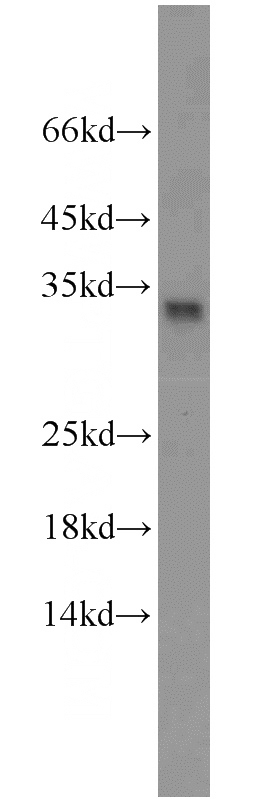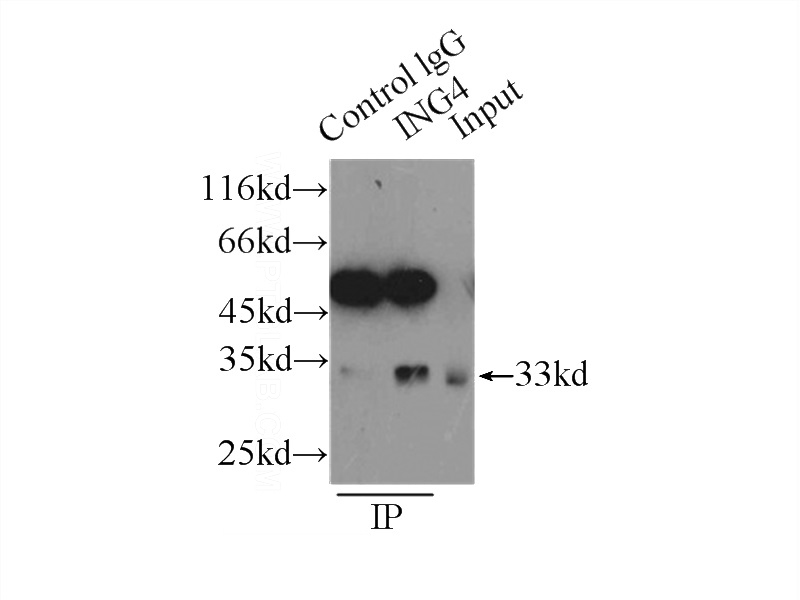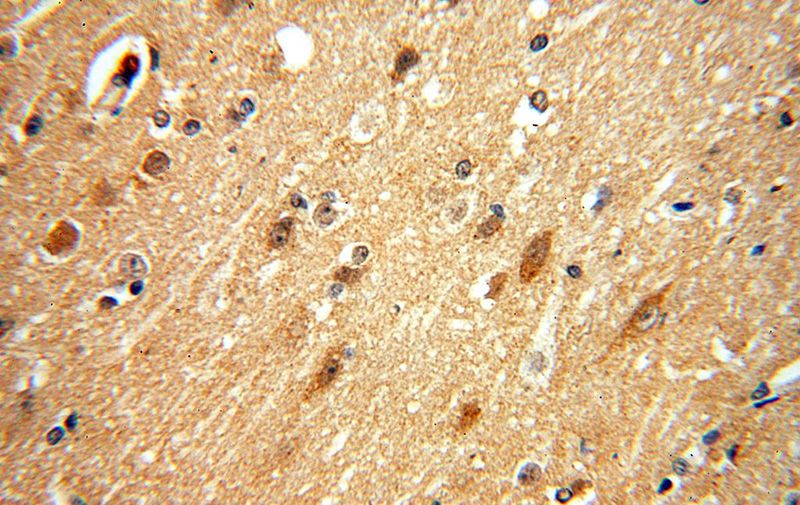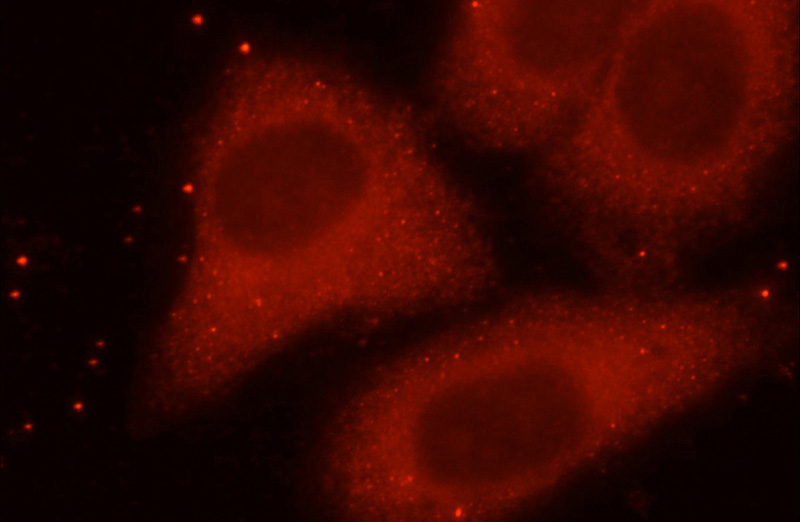-
Product Name
ING4-specific antibody
- Documents
-
Description
ING4-specific Rabbit Polyclonal antibody. Positive IF detected in HepG2 cells. Positive IHC detected in human brain tissue, human liver cancer tissue. Positive IP detected in HeLa cells. Positive WB detected in Jurkat cells, HEK-293 cells, HeLa cells, mouse colon tissue. Observed molecular weight by Western-blot: 29-32 kDa
-
Tested applications
ELISA, WB, IHC, IF, IP
-
Species reactivity
Human,Mouse,Rat; other species not tested.
-
Alternative names
ING4 antibody; Inhibitor of growth protein 4 antibody; my036 antibody; p29ING4 antibody
-
Isotype
Rabbit IgG
-
Preparation
This antibody was obtained by immunization of Peptide (Accession Number: NM_001127582). Purification method: Antigen affinity purified.
-
Clonality
Polyclonal
-
Formulation
PBS with 0.02% sodium azide and 50% glycerol pH 7.3.
-
Storage instructions
Store at -20℃. DO NOT ALIQUOT
-
Applications
Recommended Dilution:
WB: 1:200-1:2000
IP: 1:200-1:1000
IHC: 1:20-1:200
IF: 1:10-1:100
-
Validations

Jurkat cells were subjected to SDS PAGE followed by western blot with Catalog No:111796(ING4-specific antibody) at dilution of 1:500

IP Result of anti-ING4-specific (IP:Catalog No:111796, 3ug; Detection:Catalog No:111796 1:300) with HeLa cells lysate 2500ug.

Immunohistochemical of paraffin-embedded human brain using Catalog No:111796(ING4-specific antibody) at dilution of 1:50 (under 40x lens)

Immunofluorescent analysis of HepG2 cells using Catalog No:111796(ING4-specific Antibody) at dilution of 1:25 and Rhodamine-Goat anti-Rabbit IgG
-
Background
ING4, also named as p29ING4, belongs to the ING family. It is a component of the HBO1 complex which has a histone H4-specific acetyltransferase activity, a reduced activity toward histone H3 and is responsible for the bulk of histone H4 acetylation in vivo. It may inhibit tumor progression by modulating the transcriptional output of signaling pathways which regulate cell proliferation. ING4 can suppress brain tumor angiogenesis through transcriptional repression of RELA/NFKB3 target genes when complexed with RELA. It may also specifically suppress loss of contact inhibition elicited by activated oncogenes such as MYC. Represses hypoxia inducible factor's (HIF) activity by interacting with HIF prolyl hydroxylase 2 (EGLN1). ING4 is a tumor suppressor gene that interacts with NFkB and represses its transcriptional activity. Several lines of evidence suggest that the tumor suppressor gene ING4, NFkB and its target genes matrix metalloproteases MMP-2, MMP-9 and urokinase plasminogen activator (u-PA) are critically involved in tumor invasion. This antibody is specifically against p29ING4.
-
References
- Li XH, Kikuchi K, Zheng Y. Downregulation and translocation of nuclear ING4 is correlated with tumorigenesis and progression of head and neck squamous cell carcinoma. Oral oncology. 47(3):217-23. 2011.
- Zhang G, Li G. Novel multiple markers to distinguish melanoma from dysplastic nevi. PloS one. 7(9):e45037. 2012.
- Moreno A, Soleto I, García-Sanz P, Moreno-Bueno G, Palmero I. ING4 regulates a secretory phenotype in primary fibroblasts with dual effects on cell proliferation and tumor growth. Oncogene. 33(15):1945-53. 2014.
- Li J, Zhang Z, Li G. Patient outcome prediction using multiple biomarkers in human melanoma: A clinicopathological study of 118 cases. Experimental and therapeutic medicine. 2(1):131-135. 2011.
Related Products / Services
Please note: All products are "FOR RESEARCH USE ONLY AND ARE NOT INTENDED FOR DIAGNOSTIC OR THERAPEUTIC USE"
